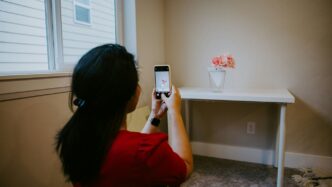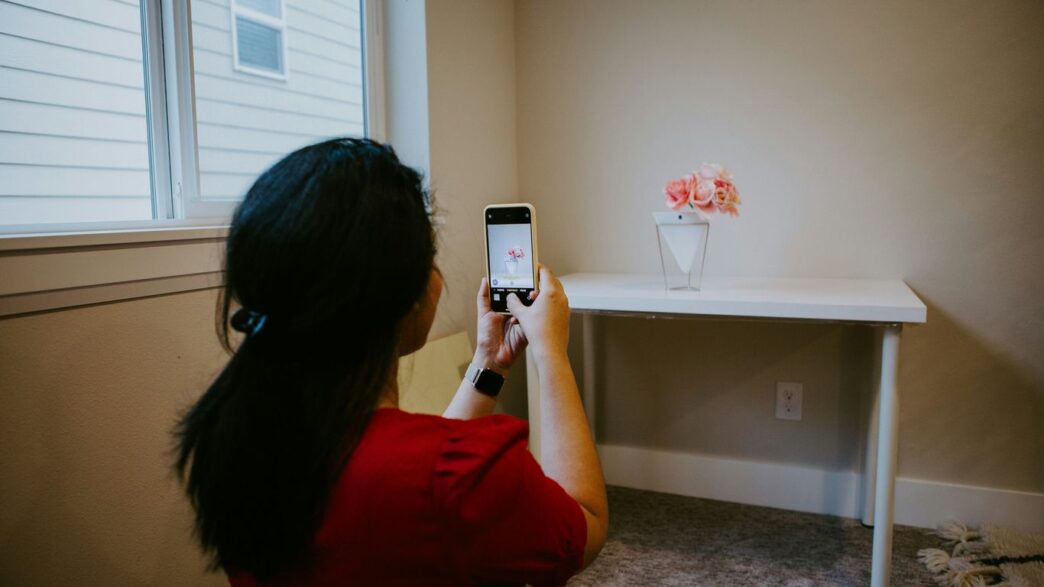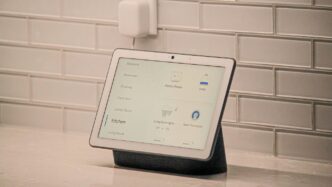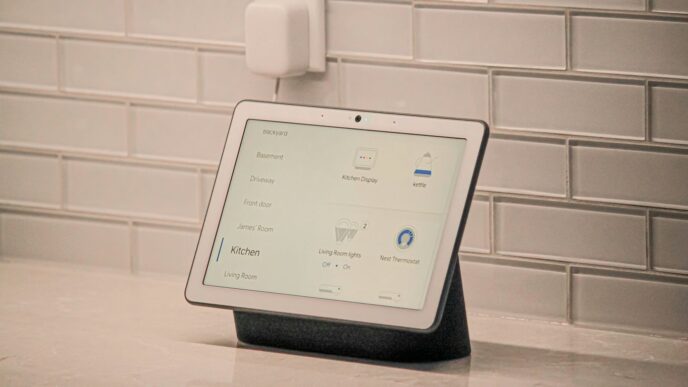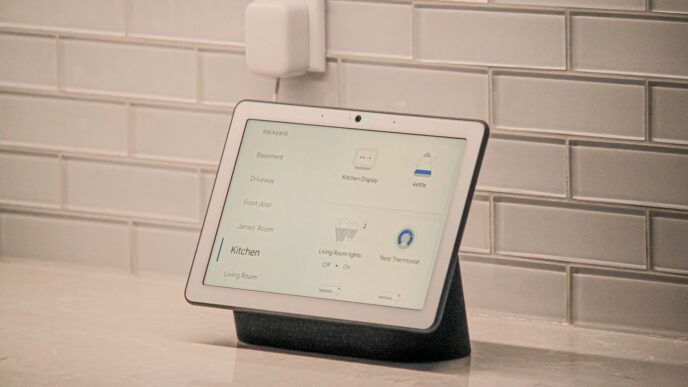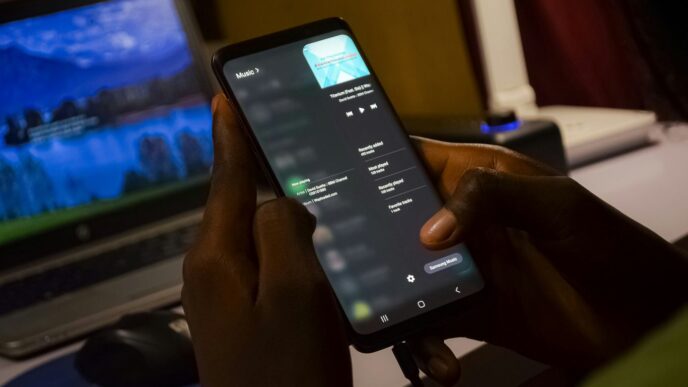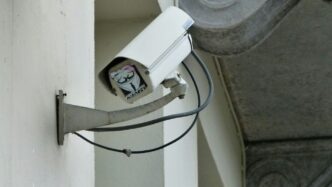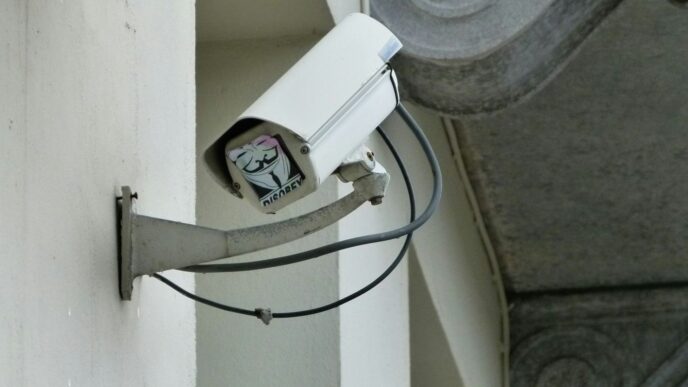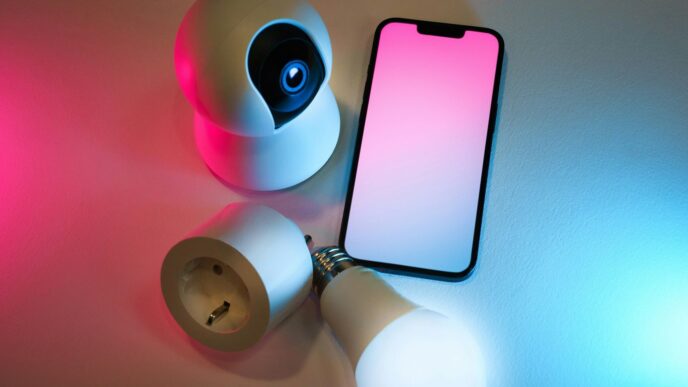Thinking about making your home a bit smarter? The Kasa app is a good place to start. It helps you manage all sorts of smart gadgets, from lights to plugs. You don’t need to be a tech whiz to get going with it. This guide will walk you through what the Kasa app can do and how to make it work best for you.
Key Takeaways
- The Kasa app lets you control your smart devices from anywhere, even when you’re not home.
- You can set up schedules for your lights and other devices to turn on or off automatically.
- Creating custom ‘scenes’ allows you to adjust multiple devices with a single tap for different moods or activities.
- The Kasa app can help you save energy by managing when your devices are active.
- Regularly updating device firmware and checking security settings are important for keeping your smart home safe.
Getting Started With The Kasa App
So, you’ve got some new Kasa smart devices and you’re ready to make your home a little more automated. That’s great! The Kasa app is your main control center for all of it. It’s pretty straightforward, but let’s break down what you need to know to get going.
Understanding Kasa App Basics
First things first, you’ll need to grab the Kasa Smart app. You can find it on either the Apple App Store or the Google Play Store. Once it’s installed, you’ll need to connect your phone to your home’s 2.4 GHz Wi-Fi network. This is a common requirement for many smart home gadgets, so keep that in mind. After that, the app will guide you through adding your new Kasa devices. It usually involves plugging in the device, and then the app finds it and helps you connect it to your Wi-Fi. The whole setup process is designed to be pretty simple, even if you’re not super tech-savvy. You’ll give your devices names, like "Living Room Lamp" or "Bedroom Fan," which makes controlling them much easier later on.
Remote Control Features
Once your devices are set up, the real fun begins. The Kasa app lets you control your devices from anywhere, as long as you have an internet connection. That means you can turn lights on or off, adjust a smart plug, or check on a camera, all from your phone. It’s handy if you forget to turn off a light before leaving the house or want to turn on a fan before you get home on a hot day. You can also group devices together. For example, you could create a "Downstairs Lights" group and turn them all on or off with a single tap.
Creating Schedules
Schedules are where the automation really kicks in. Instead of manually turning things on and off, you can tell your Kasa devices exactly when to do it. This is great for:
- Waking Up: Set your bedroom lamp to turn on gradually a few minutes before your alarm.
- Leaving Home: Schedule all your lights and non-essential plugs to turn off at a specific time each night.
- Vacation Mode: Make it look like someone’s home by having lights turn on and off at random times while you’re away.
Setting up a schedule is usually as simple as picking the device, choosing the days of the week, and setting the on/off times. You can find more details on setting up your Kasa Smart device on the TP-Link support site.
Customizing Your Smart Home Experience
So, you’ve got the Kasa app up and running, and maybe you’ve even set up a few basic things. That’s great! But the real magic happens when you start tailoring it to fit your life. It’s not just about turning lights on and off from your phone anymore; it’s about making your home work for you, in ways that actually make sense.
Setting Up Lighting Schedules
This is one of the easiest ways to make a big difference. Think about it: no more fumbling for switches in the dark when you get home. You can set lights to come on automatically at sunset, or have them gently fade on in the morning to wake you up more naturally. It’s also a neat trick for when you’re away – making it look like someone’s home can be a good deterrent.
Here’s a quick idea of what you can do:
- Morning Wake-Up: Lights in the bedroom slowly brighten starting 15 minutes before your alarm.
- Evening Wind-Down: Living room lights dim to 30% at 9 PM.
- Away Mode: All lights turn off at 11 PM if you haven’t manually turned them off.
Creating Custom Scenes
Scenes are like pre-set moods for your home. Instead of adjusting multiple lights or devices one by one, you can trigger a scene with a single tap or voice command. This is where you can get creative.
Imagine these:
- "Movie Night" Scene: Dims the living room lights, turns on the TV (if it’s a smart plug-controlled TV), and maybe even adjusts the thermostat slightly.
- "Dinner Party" Scene: Sets a warm, inviting light in the dining room and living areas.
- "Good Morning" Scene: Gradually brightens bedroom lights, turns on a smart plug connected to your coffee maker, and maybe even starts your favorite news briefing.
The Kasa app lets you group devices and set specific states for each one within a scene. This means you can have different lights at different brightness levels, all activated at once.
Integrating With Other Devices
Your Kasa devices don’t have to live in a bubble. The Kasa app plays nicely with other smart home platforms and services. This is where things get really interesting, allowing for more complex automations.
For example, you can link Kasa devices with:
- Voice Assistants (Alexa, Google Assistant): Control your Kasa lights and plugs using just your voice. You can even set up custom voice commands that trigger scenes or multiple actions.
- IFTTT (If This Then That): This service lets you create connections between Kasa and hundreds of other apps and devices. For instance, you could set it up so that when your smart doorbell detects motion, a Kasa light in your entryway turns on.
- Other Smart Home Platforms: Depending on your setup, Kasa devices might integrate with broader smart home systems, allowing for even more unified control and automation across different brands.
Advanced Kasa App Functionality
So, you’ve got the basics down with Kasa, right? You can turn lights on and off from your couch, maybe even set a timer for your coffee maker. But what if you want to do more? Kasa isn’t just about simple on/off switches; it’s got some deeper tricks up its sleeve if you’re willing to explore.
Exploring Kasa API Integrations
This is where things get really interesting for the tinkerers out there. The Kasa app has an API, which is basically a way for other programs or services to talk to your Kasa devices. Think of it like a secret handshake that lets you control your smart plugs and lights in ways the standard app doesn’t even show you. You can build custom dashboards or even integrate Kasa into your own home-brewed automation systems. It takes a bit of technical know-how, sure, but the possibilities are pretty wild. For instance, you could write a script that checks your local weather and turns on your porch light if it’s going to rain overnight. It’s not something everyone will do, but it’s there if you’re curious about how things work under the hood. If you’re interested in seeing how other devices can sync up, you might look into how Kasa devices can synchronize to the Tapo App.
Leveraging IFTTT for Automation
If diving into APIs sounds like too much, IFTTT (If This Then That) is a much friendlier way to get more out of your Kasa devices. IFTTT is a service that connects different apps and devices, letting you create simple "applets." These are like mini-automations. For example, you could set up an applet that says, "If my smart camera detects motion, then turn on my living room lamp." Or, "If the weather forecast calls for rain, then turn off my smart outdoor plug." It’s a visual way to build complex routines without needing to code.
Here are a few ideas to get you started with IFTTT and Kasa:
- Morning Routine: When your alarm goes off (if your alarm service is on IFTTT), turn on your bedroom light to 50% brightness.
- Evening Wind-Down: At sunset, dim your living room lights and turn off your kitchen lights.
- Vacation Mode: If you mark yourself as "away" on a travel app, have your lights turn on and off randomly in the evening.
Unlocking New Possibilities
Beyond specific integrations, the Kasa app is constantly evolving. Keep an eye on firmware updates for your devices and new features within the app itself. Sometimes, a simple software update can add capabilities you never knew you needed. For example, Kasa has been improving its local control options, meaning you can still manage your devices even if your internet connection goes down. This is a big deal for reliability. Also, remember that Kasa devices are part of a larger smart home picture. Thinking about how they can work with other brands or even different types of Kasa devices can lead to some pretty neat setups. It’s all about connecting the dots and seeing how your smart home can work for you in more ways than one.
Optimizing Your Home With The Kasa App
So, you’ve got your Kasa devices set up and maybe even a few schedules running. That’s great! But the Kasa app can do more than just turn lights on and off. It can actually help you make your home run a bit smoother and maybe even save you some money. Let’s look at how.
Enhancing Energy Efficiency
This is a big one. Wasting electricity is like throwing money out the window, right? Kasa devices can help you stop that. Think about those devices that draw power even when they’re "off" – like TVs or game consoles. You can plug them into a Kasa smart plug and set it to completely cut the power when you’re not using them, say, overnight. Or maybe you forget to turn off the lights in rooms you’re not using? Setting up schedules to turn them off automatically after a certain time, or when you leave the house (we’ll get to that later), can make a real difference.
Here’s a quick look at how schedules can help:
- Lights: Schedule them to turn off at bedtime or when you typically leave for work.
- Appliances: Use smart plugs to power down electronics that have standby power drain.
- Thermostats (if compatible): Program them to lower the temperature when you’re away or asleep.
The Kasa app makes it easy to see which devices are consuming power and set them to be more efficient.
Improving Home Security
Smart devices can also add a layer of security to your home. Imagine you’re on vacation. Instead of leaving lights on constantly, which can be a dead giveaway that no one’s home, you can use the Kasa app to create random lighting schedules. This makes it look like someone is home, moving around. You can set lights to turn on and off at different times each day, making your home less of a target.
- Simulate Occupancy: Use lighting schedules to make it appear someone is home, even when you’re away.
- Remote Monitoring: If you have Kasa cameras, you can check in on your home from anywhere using the app.
- Alerts: Set up motion detection alerts for cameras to be notified of any unusual activity.
Utilizing Geofencing Features
This is where things get really smart. Geofencing uses your phone’s location to trigger actions. For example, you can set it up so that when your phone leaves a certain radius around your home, all your Kasa lights automatically turn off. Then, when your phone comes back into range, they can turn back on. It’s super convenient and another way to save energy without even thinking about it. You can also set up security lights to turn on when you’re approaching home after dark. It’s all about making your home react to your presence, or absence, automatically.
Expanding Your Smart Home Ecosystem
So, you’ve got a few Kasa devices humming along nicely, and now you’re thinking, ‘What’s next?’ It’s totally normal to want to add more to the mix. Expanding your smart home is where things really start to get interesting, turning your house into a truly connected space.
Adding New Kasa Devices
Adding more Kasa gear is usually pretty straightforward. The app is designed to make this easy. You’ll typically just open the Kasa app, tap the plus sign to add a new device, and follow the on-screen prompts. It’s a good idea to add them one by one, especially if you’re adding several at once. This way, if something goes wrong, you know exactly which device is causing the trouble. It helps avoid a big headache later on.
- Plug in the new Kasa device.
- Open the Kasa app and select ‘Add Device’.
- Follow the app’s instructions to connect it to your Wi-Fi.
- Give your new device a clear name (like ‘Bedroom Lamp’ or ‘Kitchen Outlet’).
Once a new device is added, remember to check your existing routines and automations. You might want to include your new smart plug in that ‘Good Morning’ scene or have your new smart bulb turn on with the security cameras. It’s all about making your devices work together.
Upgrading Your Smart Hub
If you’re finding that your current setup is getting a bit crowded or maybe your router is a few years old, it might be time to think about an upgrade. A better router can mean a more stable connection for all your devices. If you’re using a dedicated smart home hub (not just your Wi-Fi router), and it’s not keeping up, there are newer models out there that support more advanced features and protocols. This can make managing everything much smoother. You might even consider if your Kasa devices can sync with other platforms, like transitioning to the Tapo App if you decide to explore other ecosystems.
Creating Smart Home Zones
As your smart home grows, especially in a larger house, organizing devices into zones can be a game-changer. Think of it like creating different ‘neighborhoods’ within your home for your smart tech. You could have a ‘Living Room Zone’ with your smart lights and TV plug, a ‘Kitchen Zone’ for appliances, or even a ‘Security Zone’ that groups cameras and motion sensors. This makes controlling groups of devices much simpler, whether through the app or voice commands. It helps keep things tidy and makes your smart home feel more intuitive.
Maintaining Your Kasa Smart Devices
Keeping your Kasa smart devices running smoothly is pretty straightforward, but it does take a little bit of attention now and then. Think of it like giving your car an oil change – not something you do every day, but important for keeping things in good shape.
Regular Device Reboots
Sometimes, devices just need a quick restart to clear out any temporary glitches. If a Kasa smart plug or bulb seems unresponsive, or if it’s acting a little weird, the first thing to try is unplugging it (or turning off the breaker for a moment) and then plugging it back in. This simple step can fix a surprising number of minor issues without you having to do much else. It’s like hitting the reset button on your tech.
Monitoring Firmware Updates
Kasa regularly releases updates for their devices, and these aren’t just for fun. Firmware updates often include important security patches, bug fixes, and sometimes even new features. It’s a good idea to check the Kasa app every so often to see if any updates are available for your devices. You can usually find this in the device settings within the app. Just follow the prompts to install them. Most of the time, the app will notify you when an update is ready, but it doesn’t hurt to double-check.
Reviewing Security Settings
Since your Kasa devices connect to your home network, keeping an eye on security is smart. Make sure you’re using a strong, unique password for your Kasa account and your Wi-Fi network. Also, within the Kasa app, check that your devices are connected to a secure network and that you haven’t accidentally shared control with anyone you didn’t intend to. Regularly reviewing who has access to your devices is a good habit to get into, especially if you’ve had guests or family members use the app in the past.
Keep Your Smart Home Growing
So, you’ve got your Kasa app set up and your devices talking to each other. That’s awesome! But honestly, this is just the start. As technology keeps changing, so do the cool things you can do with your smart home. Think of your Kasa smart switch as the first step in making your place work better for you. Play around with the settings, see what else it can connect with, and you’ll find even more ways to make your home smarter and life a little easier. It’s a journey, and the Kasa app is your guide.
Frequently Asked Questions
What is the Kasa App and what can it do?
The Kasa App is like a control center for your smart Kasa devices, such as lights and plugs. It lets you turn them on or off from anywhere using your phone, set timers for them to work automatically, and even create special ‘scenes’ for different moods, like a ‘Movie Night’ setting that dims the lights.
Can I control my Kasa devices when I’m not home?
Absolutely! As long as your phone and your Kasa devices are connected to the internet, you can control them from anywhere in the world. This is super handy for turning off lights you forgot about or making it look like someone’s home when you’re on vacation.
How do I set up a schedule for my Kasa lights?
Setting up schedules is easy! Open the Kasa App, select the device you want to schedule, and look for the ‘Schedule’ or ‘Timer’ option. You can then choose specific times and days for your lights or other devices to turn on or off automatically.
What are ‘Custom Scenes’ in the Kasa App?
Custom scenes let you control multiple Kasa devices with a single tap or voice command. For instance, you could create a ‘Good Morning’ scene that turns on your bedroom light, starts the coffee maker, and adjusts the thermostat, all at once.
Do Kasa devices work with other smart home systems like Alexa or Google Assistant?
Yes, many Kasa devices are designed to work with popular voice assistants like Amazon Alexa and Google Assistant. This means you can use voice commands to control your lights and other connected devices, making your smart home even more convenient.
How can the Kasa App help save energy?
The Kasa App helps you save energy by allowing you to schedule devices to turn off automatically when not needed, like lights left on in empty rooms. You can also monitor energy usage for some Kasa devices, helping you understand where you can cut back and save money on your electricity bill.

